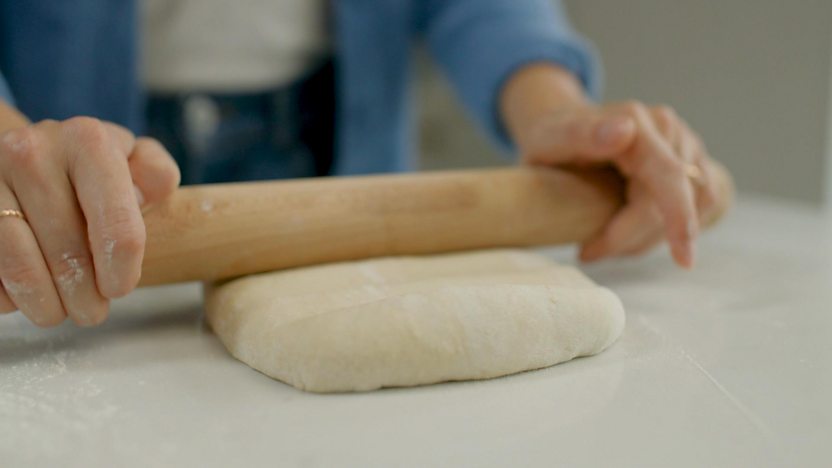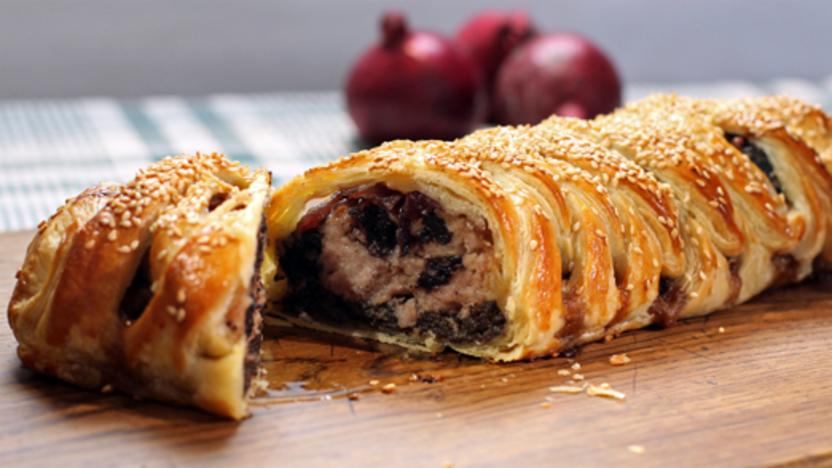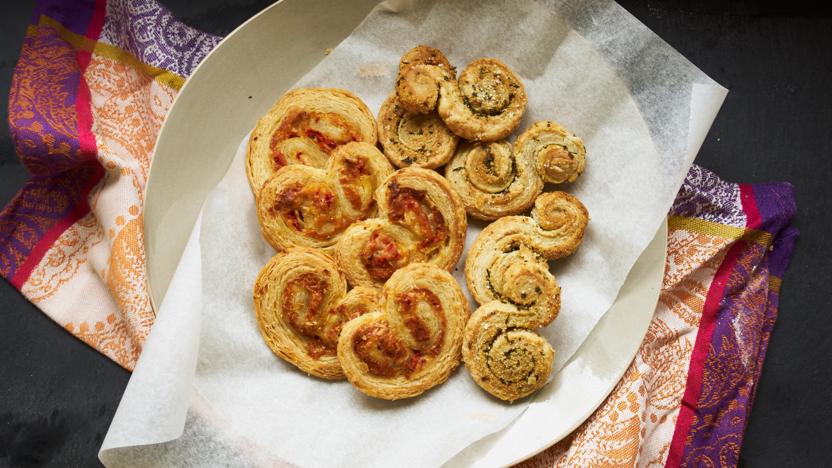How to make puff pastry

Skill level
Intermediate
Equipment you will need for this technique
Round tipped knife
Cling film
Baking paper
1. Put the flour in a large bowl and stir in the salt. Add in 90ml/3fl oz water and stir with a round-tipped knife until the mixture starts to come together. If it still looks dry, add in the remaining 30ml of water in small amounts until the dough comes together (different brands of flour will absorb different amounts of water). Using your fingers bring the clumps of moistened flour together and fold it over a few times to make a smooth dough. This dough is called a d茅trempe and should be soft and not sticky. Alternatively you can place the above into a food processor and pulse until it comes together.
2. Shape the dough into a rectangle, roughly 10x15cm/4x6in. Wrap in cling film and place in the fridge for 20 minutes. This allows the gluten to relax and the moisture to evenly distribute.
3. It is important that your butter is at the correct temperature: it should be pliable, but if it looks oily it has become too soft and needs to be refrigerated. Place the butter between two pieces of baking paper and using a rolling pin bash slightly so that the butter flattens. Roll the butter into a rectangle about 6x12cm/2陆x4陆in.
4. Roll the dough into a rectangle 15x30cm/6x12in. Place the butter on one half of the dough, leaving a 1cm/陆in border around the edge. Fold these edges over the butter, then fold the other half of the dough over the top to encase the butter completely.
5. At this point do not turn the pastry. Give the pastry 2 rolls and folds as shown in the video.
6. Roll and fold the pastry a total of 6 times. If streaks of butter are showing in the pastry then roll it once more.
7. The pastry is now ready to use. For best results use immediately or refrigerate wrapped tightly in cling film for 3 days or freeze for 1 month (to defrost place in the fridge overnight).
TIPS
If at any point the butter breaks through the pastry because it has become too soft, wrap the pastry in clingfilm and refrigerate it immediately until the butter is firmer but still pliable. If the pastry is chilled for too long the butter will become hard and will break when the pastry is rolled and folded again.
If at any point you can feel hard lumps of butter in the pastry, leave it at room temperature until the butter softens so that it is pliable.
Do not roll more than 7 times as the layers of flour will start to seperate and become fragile.


